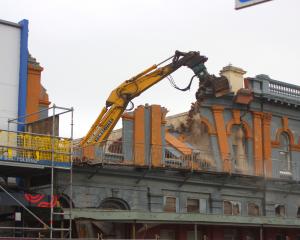
Land along the river between Queensberry and Lake Dunstan was vulnerable to hazards from flooding, bank erosion and alluvial fans subject to debris and flood flows.
''Due to the unpredictable nature of flood events and bank erosion, no area alongside the margins of the Clutha River can be considered to be completely free of flood/erosion hazards,'' a council report said.
It was found a small number of houses and other assets were either located within the flood hazard area, or were potentially vulnerable to erosion hazard.
This meant any additional intensification or development in hazard-prone areas would increase the risk.
''Therefore, any decisions on land use should give careful consideration to the potential risk, and ensure that any activities are compatible with the area's hazard exposure.''
Previous flood events in the area caused widespread flooding in parts of the valley, along with significant changes in the shape of the river and its floodplain, due to bank erosion and sedimentation.
At present, there were about 20 homes located on the lower terraces including two that were within the one-in-one-hundred-year flood hazard model.
There were also other buildings, sheds and roads in the area. Those homes and buildings would probably be flooded to a depth of between 0.1m and 0.4m during such an event.
Between 2006 and 2013, the area's population increased from 453 to 789, an increase of almost 75% in just seven years. Added to that, between 2009 and mid-2014, there were 66 applications to the Central Otago District Council for new rural dwellings in the Queensberry-Crippletown area.
''The growing population of this area and related demand for development increases the level of exposure to natural hazards and as a result increases the associated risk.''
The report was also intended to raise awareness of the community's vulnerability to natural hazards and to help inform good decision-making in this regard.
Council chairman Stephen Woodhead said at a meeting last week while it was not an area people would think needed a hazard assessment report, issues in the recent past such as the 1999 flood and proposals for subdivisions in the area, meant it was needed.
''Floods stay a long time in this river.''
Councillor Gary Kelliher said the development potential and demand for land in the area as well as the roading assets meant the hazard information was extremely valuable.
Council director engineering, hazards and science Gavin Palmer said the report which pulled together earlier technical investigations and recent flood modelling work, was timely as the Central Otago District Council was about to review its district plan.
It was hoped the district council would take the report's findings into consideration when developing the plan's land use controls.











